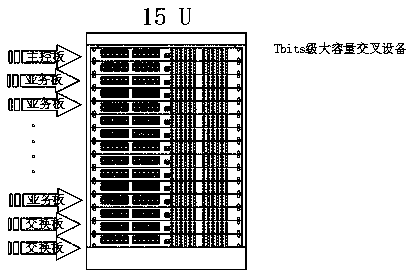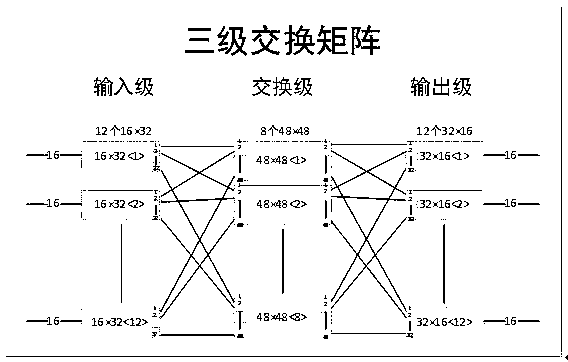Improved three-level CLOS routing algorithm based on FPGA crossover
A routing and algorithm technology, applied in the field of improved three-level CLOS routing algorithm based on FPGA cross, can solve the problems of cross switching capability and blocking that cannot meet the large capacity, meet the needs of large capacity cross, increase flexibility, solve large The effect of capacity crossing on demand
- Summary
- Abstract
- Description
- Claims
- Application Information
AI Technical Summary
Benefits of technology
Problems solved by technology
Method used
Image
Examples
Embodiment Construction
[0025] The operating platform of the present invention is a large-capacity TBits-level crossover device. The device needs to be filled with 12 service boards, 2 switching boards, and 1 main control board. After the device is powered on, the control program on each board starts, and each board The running status light of the upper board card shows that the device control network management and the device are interconnected through a network cable or a switch, so that the two can communicate in the same LAN. Address, port number, device id, etc., enter the control interface of the TBits-level device, check the status of the board, click the business view, in the business view, you can perform operations such as creating a new cross-connect / deleting a cross-connect, and clicking the new cross-connect will pop up a cross-connect information input box. Select the input and output board number / input and output port number / output signal type / output granularity / output bandwidth. If the...
PUM
 Login to View More
Login to View More Abstract
Description
Claims
Application Information
 Login to View More
Login to View More - R&D
- Intellectual Property
- Life Sciences
- Materials
- Tech Scout
- Unparalleled Data Quality
- Higher Quality Content
- 60% Fewer Hallucinations
Browse by: Latest US Patents, China's latest patents, Technical Efficacy Thesaurus, Application Domain, Technology Topic, Popular Technical Reports.
© 2025 PatSnap. All rights reserved.Legal|Privacy policy|Modern Slavery Act Transparency Statement|Sitemap|About US| Contact US: help@patsnap.com



